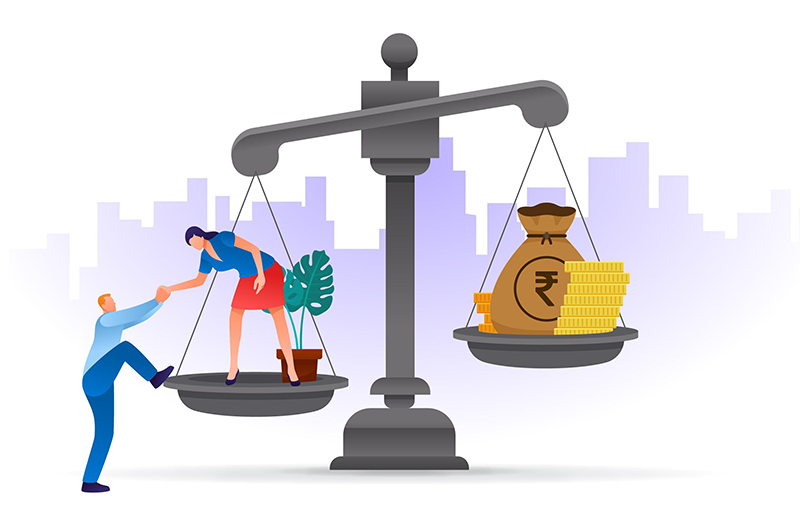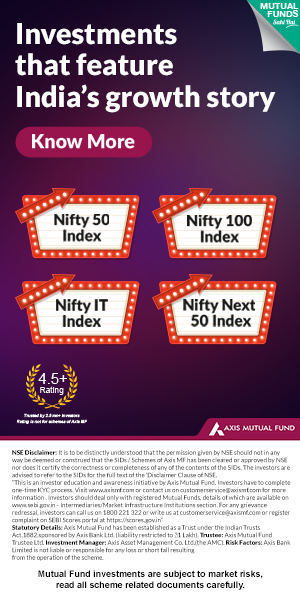Financial Glossary starting with Alphabet W
-
Weather Derivatives
In the last few years, the monsoons have played truant with us on more than one occasion. But what if your company's bottom-line depended on a good and timely monsoon?
Even in our advanced, technology-based society, we still live largely at the mercy of the weather. It influences our daily lives and choices, and has an enormous impact on corporate revenues & earnings. Until recently, there were very few financial tools offering companies' protection against the erratic nature of the weather.
However, “Weather Derivatives” have changed all this by providing protection against the uncertainties of the weather. Any derivative product derives its value from some underlying asset. Weather derivatives use weather conditions—such as city temperature, rainfall and wind speed and so on —to create different kinds of derivative instruments.
Although you can’t put a price tag on rainfall or temperature, weather conditions do fluctuate like the price of your stocks and bonds. That’s what enables the creation of weather derivatives, which work just like any other derivative. Sounds quite intriguing, doesn’t it?
Now let’s understand better through the following example…
Let’s say Mr. Kissan is a farmer whose fortunes depend on the arrival of timely monsoons. Also, lets assume that Rs. 600 is his overall cost for plowing, sowing wheat etc. If the monsoons are on time he earns, say, Rs. 1000 & makes a profit of Rs. 400 (Rs. 1000 – Rs. 600). But if they are delayed, his earnings could reduce to Rs 500. In this case, he will not be able to even recover his cost of Rs. 600.
However his need is to earn at least Rs. 600+ to earn any profit. Therefore, he is willing to spend some money if someone can ensure that he makes some profit (even if it’s less than Rs. 400) whether the monsoon is on time or not.
This need for protection gives rise to “Weather Derivative Contracts”.
So he heads to an institution like a bank which offers him a weather derivative contract and is willing to stand guarantee for the same for a cost of Rs 200 which is also known as the ‘premium’.
Thus, Mr. Kissan gets into a ‘Weather Derivatives’ contract with the bank. The contract ensures that even if the monsoon is not on time, his earnings would be protected. However for this he will have to pay a premium of Rs 200. Thus if monsoons are on time, he is able to earn Rs. 1000 out which he pays Rs 200 as premium for the derivative contract. Thus he still earns Rs 800 (Rs. 1000 – Rs. 800) which is good enough for his needs.
However if the monsoons are not on time, he still receives Rs 1000 as his earnings due to the weather derivative contract drawn between him & the bank. The bank thus acts as an intermediary, which hedges or protects Mr. Kissan from an unpredictable monsoon.
In ‘Weather Derivatives’ two parties have differing points of view on the weather just as in Futures Trading two parties have different points of view on the future price of a stock.
In Weather Derivatives both parties achieve their goals of protecting their interests. While there may be an opportunity loss for Mr. Kissan, he still lands up making a profit of Rs. 200. At least he would have been at peace for the period before the monsoon since he remained protected against any kind of weather fluctuation.
The bank, on the other hand, charges Rs 200 as risk premium. It earns this money if the weather turns out as per its expectation but in case the weather fails, it would lose Rs 800 (Rs 1000 – Rs 200). (Source: TATA Mutual Fund) -
Weather Derivatives- Counter Party Transactions
Hopefully the lesson on ‘Weather Derivatives’ helped you get a good idea about the concept. Here, we’ll try to explore another angle of the same concept.
In the earlier example, we saw the bank selling the weather derivative products. However, we need to understand that the bank too hedges its risk by selling these products to different people having exactly the opposite view as well.
In the real world, imagine there are several farmers in the market who want the monsoon to come on time. So they buy ‘Weather Derivative’ products as a hedge and pay a premium to the bank.
Similarly there are other people like ice cream sellers who actually do not want the rains to come on time. A delay in monsoon extends their selling season and consequently sales and profits!So the ice cream maker too buys weather derivative products from the bank to hedge himself from early monsoon season. Thus, if the monsoons arrive early the bank protects him against losses.
Let’s say the ice cream seller earns Rs 1000 as profit in a good season and Rs 500 as profit during the monsoons. Since he wants to hedge himself against early monsoons & not lose out on the remaining Rs. 500, he buys the weather derivative products at, say, Rs 300 to hedge him against losing the remaining Rs. 500.
Now let’s look at two different scenarios…
Scenario A: The monsoons come early - In this case, he makes only Rs. 500. But as he gets protected by the derivative product for the remaining Rs. 500, he earns Rs 1000 in total. However since he has paid Rs 300 for the derivative product, his net earnings is Rs 700 which is still better than the Rs. 500 which he would have otherwise made.
Scenario B: The monsoon arrives on time (and not early) - In this case, while he makes Rs. 1000 as his normal profit, he stands to lose his premium of Rs 300 but again makes a net profit of Rs. 700 (Rs 1000 – Rs 300).
In this way the ice-cream seller also hedges (protects) his interests from the vagaries of the weather by way of weather derivative products.
Having people with opposite expectations helps the bank hedge their risks as well. If rains get delayed, the bank loses out on the farmers but gains from the ice-cream sellers. Conversely if the rains come early, the bank loses out on the ice-cream sellers but gains from the farmers.
Thus we have seen how weather derivatives are used by different types of people with different expectations for their benefits! (Source: Tata Mutual Fund)









